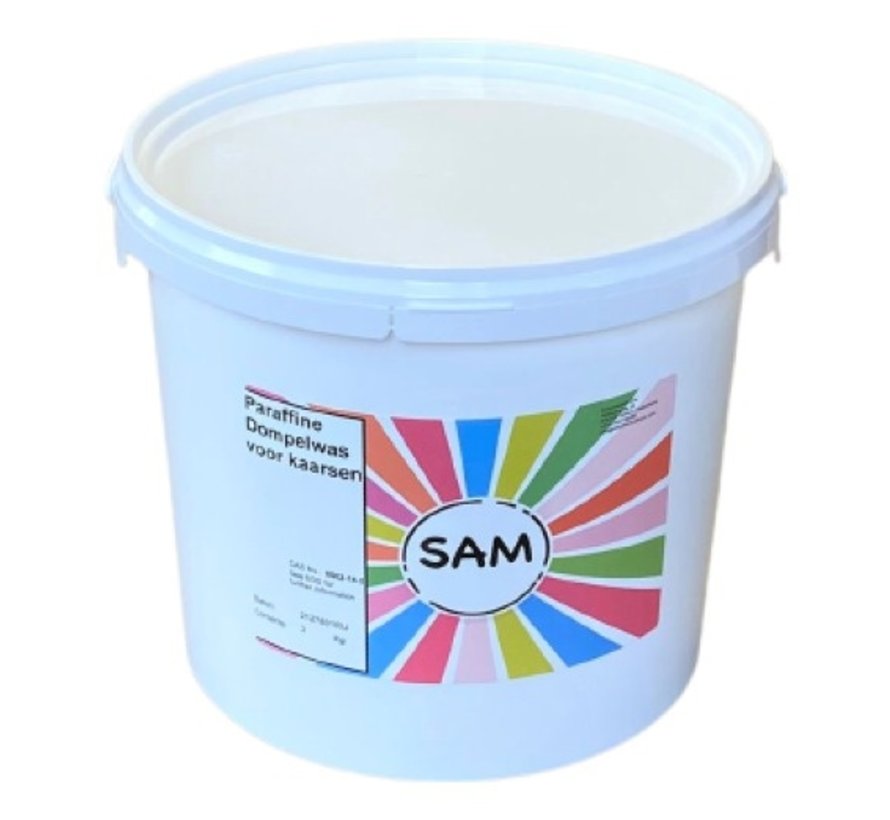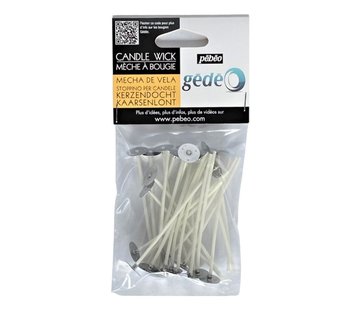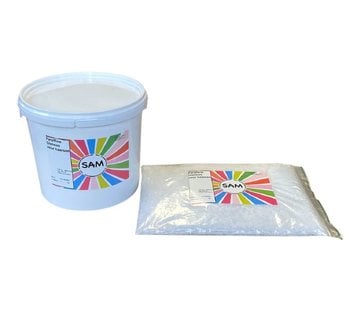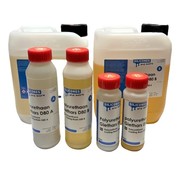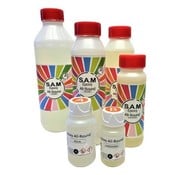Paraffin Dip Wax for Candles
Dipping candles
Requirements:
- Paraffin Dip Wax for Candles
- Wick: 3x6
- Immersion heater (optional)
Paraffin:
Paraffin is a "residual" product of the fossil raw material petroleum
This is a saturated hydrocarbon.
The paraffin we offer is pure and contains no harmful substances. From a toxicological point of view, this paraffin is harmless to public health.
Making candles with paraffin:
The possibilities of making a candle with paraffin are very large. By making a candle you can determine your own shape, color and scent.
To make a candle, a certain "recipe" is often used. By adding raw materials such as Stearin, the flammability is improved. In addition, there are various safe candle dyes, so that you can give a candle its own look. By adding a scent you give the candles extra character and make the atmospheric experience of burning extra special.
Melting Paraffin:
Read all the information about paraffin first, so that you can work correctly and safely.
Safety:
It sounds simple, but before you start, think about your safety for yourself, for others and for animals!
Molten paraffin can cause burns. Provide the right protective equipment and think of fire safety.
Time:
Give the melting of paraffin some time! Paraffin is a poor conductor of heat and will therefore melt slowly.
Contraction/expansion:
Paraffin can expand up to 20%! After solidification, it will shrink again. Keep this in mind when you pour the paraffin into a mold.
Ambient temperature:
The ideal ambient temperature for processing paraffin is 18°C.
To heat:
Heat the paraffin indirectly by means of "au-bain-marie". Make sure you can regulate temperature by means of an adjustable thermostat. (for example, the knobs on your stove.)
Wick / pit
A wick, is the heart of your candle. This important part of your candle ensures that the candle burns well or...not well. Therefore, choose the right wick for the candle you want to make. The fuses we offer are of the highest quality and safety standard.
Choosing the right wick:
The following factors influence the choice of fuse:
- Form
- Diameter
- Composition "recipe"
- Adding color
- Adding Fragrance
When producing multiple candles, we recommend testing one candle first.
Description:
Dipping candles is a patient job. It is important to prevent drafts, this can cause wrinkles in the candle
- Melt the dipping wax to 68 — 73 °C. If the wax is too hot, the wax will set too slowly and will not adhere to the wick.
- Prepare the dipper with the desired wick/wick. For standard dinner candles, this is the 3x6. Dipping can be done with a loose wick, but the use of an immersion heater is recommended to increase production. This keeps the wick tense and makes it possible to immerse several candles at the same time.
- The plunger can be easily prepared using a pit tensioner. Make sure the wick is stretched straight and tight on the plunger. Tie the wick to the bottom wheel of the plunger. Thread the pit from top to bottom (alternately) and finish at the bottom wheel again. Now remove the plunger from the tensioner or loosen the top screw, so that the wick comes under tension.
- Dip the whole thing in the paraffin and let the wick soak up well. This takes about 30 seconds.
- Then dip the candles evenly in one smooth motion. Wait about 1 minute in the meantime to allow the paraffin to solidify. Use the standard for immersion heaters for this.
- For a standard dinner candle (length 28 cm, diameter ø 2.3 cm) approximately 30 dips are required.
- After dipping, partially hang the dipper back in the paraffin to melt the candles to the desired length or use a melting tray for this.
- To color dinner candles, they can be dipped in colored paraffin. While the candles are still warm, they can be shaped as desired.



Possible solutions to known issues:
Smoke from the candle:
try a smaller wick
check fuse placement
Dripping the candle:
use a thicker wick
check if the candle is straight
prevent drafts when burning
Small flame:
use a bigger wick
Customize the addition (recipe, color, fragrance)
Carbon deposition on the wick:
use pure paraffin and limit additions
check centering and relaxation of the wick while pouring
White ash at the end of the wick:
use pure paraffin and the right additives
check if the wick is straight in the mold before pouring
Fragrance and color
By adding a fragrance and/or dye, you can personalize a candle and give it a unique character.
Adding a dye or fragrance will change the burning properties. Because of the many raw materials in the color fragrances, it is not possible to indicate exactly what change this causes.
It is therefore wise to test a candle first. Look at the composition, the amount of dye and fragrance and the choice of the wick.
Note: Fragrance oils can affect molds/moulds
Processing color pigment
1. Weigh the required amount of color pigment or count the number of color tablets to be processed.
2. Dissolve the pigment in a separate mixing bowl at a ratio of 1:10 at a temperature of approx. 90˚C.
3. Mix this whole with an electric mixer until a homogeneous mass.
4. Pour this concentrate into the rest of the wax and mix again until a homogeneous mass.
5. Check that the correct color has been achieved before starting candle production.
Dipping at 80ºC:
dip once = approx. 1.5% (15 grams / 15 tablets per kg of wash).
dip twice = approx. 1.0% (10 grams / 10 tablets per kg of wash).
To achieve the desired effect, you can increase or decrease the amount.
Dark colors may require a higher concentration.
Through-and-through colors:
Add approx. 0.1% - 0.2% p/kg (1 — 2 grams / 1 — 2 tablets per kg of wash)
To get the desired color, you can increase or decrease the amount.
Dark colors may require a higher concentration.
Differences during processing:
When coloring candles, many different factors affect the final result, including:
• way of mixing;
• temperature;
• dosage.
Below is a clear picture of the differences.

Left to right:
Candle 1: mixed by machine and dipped twice at 70 ° C
Candle 2: mixed manually and dipped twice at 85 ° C
Candle 3: mixed by machine and dipped twice at 85 ° C
Candle 4: manually mixed and dipped twice at 70 ° C
The final color rendering depends on the raw material. This can be clearly seen in the picture below. On the left, color pigment was incorporated into candles with a high fat content. The middle picture is the color rendering with 100% stearin candles and on the right the colors in pure paraffin.

The type of wax used to dip the paint is also important. In the case of the candles on the right, the left candle was dipped in paraffin wax, while the right candle was dipped in paraffin wax.






